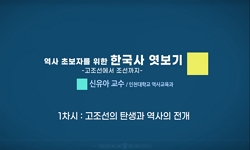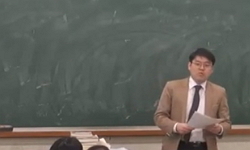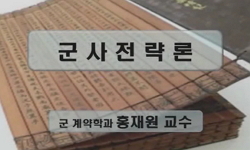고대 한반도 제철문화에 대한 고고학연구는 철기유물의 형식학적 연구와 금속학적 분석에 치중되어 오다가, 1990년대 초 경주 황성동 유적과 진천 석장리유적을 발굴조사 하면서부터 철기의...
http://chineseinput.net/에서 pinyin(병음)방식으로 중국어를 변환할 수 있습니다.
변환된 중국어를 복사하여 사용하시면 됩니다.
- 中文 을 입력하시려면 zhongwen을 입력하시고 space를누르시면됩니다.
- 北京 을 입력하시려면 beijing을 입력하시고 space를 누르시면 됩니다.
https://www.riss.kr/link?id=T9034749
- 저자
-
발행사항
오산 : 한신대학교 대학원, 2003
-
학위논문사항
학위논문(석사)-- 한신대학교 대학원: 국사학과 고고학전공 2003. 8
-
발행연도
2003
-
작성언어
한국어
- 주제어
-
KDC
911.02 판사항(4)
-
DDC
951.901 판사항(21)
-
발행국(도시)
경기도
-
형태사항
105p. : 삽도 ; 26cm
-
일반주기명
참고문헌: p. 81-87
- 소장기관
-
0
상세조회 -
0
다운로드
부가정보
국문 초록 (Abstract)
고대 한반도 제철문화에 대한 고고학연구는 철기유물의 형식학적 연구와 금속학적 분석에 치중되어 오다가, 1990년대 초 경주 황성동 유적과 진천 석장리유적을 발굴조사 하면서부터 철기의 제작과 그 소재인 鐵의 생산과정에 대한 본격적인 연구가 시작되었다. 본고는 製鐵爐를 製鍊爐, 精鍊(鍛治)爐, 鐵治爐, 鎔解爐 등 기능별로 분류하고, 공반유물 및 금속학적인 분석연구의 결과를 비교하여 남한지역의 철 및 철기생산공정의 특성을 연구하는데 그 목적이 있다.
한반도의 고대 제철문화에 있어서, 우선 제련로는 기원후 3세기 이후에 나타나며, 원형의 노가 주로 사용되다가 삼국시대를 거쳐 고려시대 이후로 갈수록 점차 대형화되고 방형의 형태가 우위를 차지하게 된다. 정련(단야)로와 용해로는 경주 황성동유적에서만 확인되는 이유로 시대적·공간적인 종합검토가 이루어지지 못한 실정이다. 단야로는 원삼국시대어서부터 현대에 이르기까지 특징적인 변화양상을 찾을 수 없었다.
한편 원삼국시대의 유적에서 출토되는 철기유물들이 塊鍊鋼, 抄鋼의 재질이 많은 점과 경주 황성동유적 제철로의 다양성은 깊은 관련을 가지는 것으로, 중국의 경우와 마찬가지로 고대 한반도에서도 철기의 생산목적에 따라 여러 가지 형태의 爐가 선별제작되어 사용되었음을 알 수 있었다. 또한 동일한 제련로에서 선철과 연철의 선별생산이 이루어졌을 가능성이 높으며, 황성동유적과 같은 종합적인 생산체계 안에서는 송풍시설의 사용 또한 필요시 해당 노에 장치하여 노의 종류를 가리지 않고 사용되었을 것으로 판단된다.
이러한 우리나라의 고대 철기문화는 중국 철기문화의 유입으로 인해 형성되었으며 단조철기의 제작과 칠의 생산, 주조철기 및 주철탈탄장의 대량 생산은 약간의 시기적인 차이가 있었다. 한반도에서는 원삼국시대 초기의 단조계 철기들, 그리고 기원전 1세기경 철생산의 시작과 기원후 2세기 초강기술의 전파 및 대량생산체계의 확보가 고대 국가의 형성기와 맞물려 진행이 되었으며, 이러한 기술사적인 발전과 역사적 사실과는 긴밀한 계기와 관련성이 있음을 알 수 있다. 즉 철광산과 철기생산기술의 확보를 전제로 하는 고대국가의 발달단계와 축을 같이 한다는 것을 의미한다.
그것은 제철작업에 수반되는 여러 가지 조건들 - 즉 爐의 구조와 철광산의 분포, 제철·탄요유적의 입지적 관련성, 송풍관과 거푸집의 속성 및 이를 통한 전제적인 제철공정을 검토함으로써 확인할 수 있었으며, 생산력의 증대와 철기생산 방식의 변화가 가져온 정치·경제적인 계층화·위계화와 맞물려 당시 사회의 혁신적 변화에 중요한 요인이 되었음을 알 수 있었다.
다국어 초록 (Multilingual Abstract)
Excavation of tombs and ancient dwelling sites has been a main trend of Korean archeology for a long time. However, the recent unearthing of Hwangseongdong and Seokjangri relics, in valuable especially for the study of early iron-producing skills and ...
Excavation of tombs and ancient dwelling sites has been a main trend of Korean archeology for a long time. However, the recent unearthing of Hwangseongdong and Seokjangri relics, in valuable especially for the study of early iron-producing skills and process, fueled a movement to change this focus from ancient dwelling sites toward production sites and their excavations.
Before Hwangseongdong and Seokjangri relics were found, there were investigations of forging remains in ancient dwelling sites and shell mounds as well as several studies on early iron-era, particularly metallugical analytic way. However, it is still necessary to investigate the relationship between iron and its production remains.
This thesis has following objectives.
First, it will study the structures of iron-manufacturing furnaces and their development through the ages.
Second, it will classify the iron-manufacturing furnaces into smelting furnaces, purifying furnaces, forging furnaces, and fusion furnaces according to their functions.
Third, this is to compare the relics with their metallugical analysis to investigate the characteristics of iron and its producing process in South Korea.
The subjects of this study are Seokjangri in Jincheon, Whangseongdong in Kyeongju, Sachon in Milyang, and Mulgeum in Yangsan. These subjects were chosen because these relics proved the existence of iron furnaces or clearly delineated the iron-producing process.
The result of this study shows there was groups which had highly developed skills in casting and forging of steel in South Korea as early as B.C. 3 century. Some conditions such as distributions of iron-fields, the co-relation of iron-processing and charcoal kilns, blast pipes and the characteristics of molds support these hypotheses. It also can be inferred that the mass production of iron and the innovation of producing process were primary factors of social development along with political and economical stratum.
목차 (Table of Contents)
- 목차
- 국문요약 = 1
- Ⅰ. 머리말 = 3
- Ⅱ. 製鐵爐의 調査現況 = 7
- 1. 原三國時代 = 8
- 목차
- 국문요약 = 1
- Ⅰ. 머리말 = 3
- Ⅱ. 製鐵爐의 調査現況 = 7
- 1. 原三國時代 = 8
- 2. 三國 및 統一新羅時代 = 14
- Ⅲ. 鍛造鐵器 製鐵爐의 性格과 技能 = 25
- 1. 製鍊爐 = 26
- 2. 精鍊(鍛冶)爐 = 39
- 3. 鍛冶爐 = 47
- Ⅳ. 鑄造鐵器 製鐵爐의 性格과 技能 = 54
- 1. 製鍊爐 = 55
- 2. 鎔解爐 = 55
- Ⅴ. 南韓地域 製鐵爐의 構造的 特性 = 66
- 1. 爐의 形態와 構造 = 66
- 2. 立地와 原料 및 燃料와의 關係 = 72
- 3. 下部施設 = 74
- 4. 送風施設 = 75
- 5. 기타 = 77
- Ⅵ. 맺음말 = 79
- 參考文獻 = 81
- Abstract = 104












